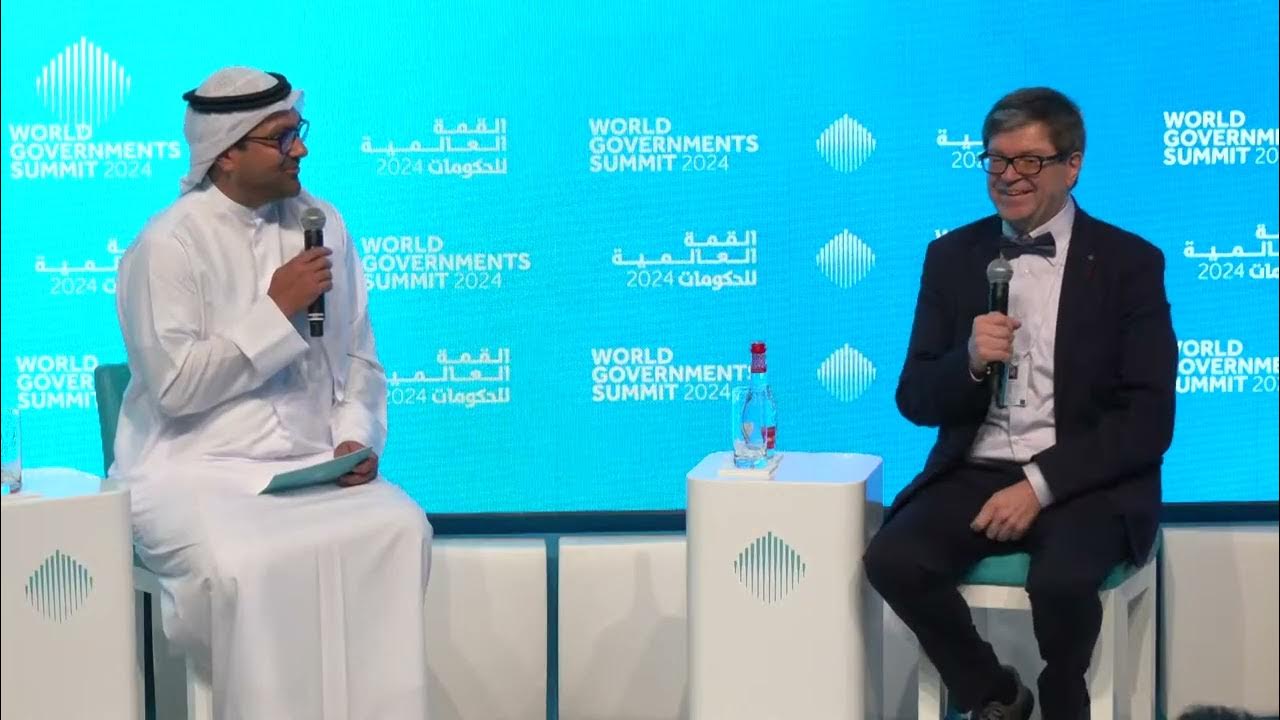What we see and what we value: AI with a human perspective—Fei-Fei Li (Stanford University)
Summary
TLDR李飞飞教授在演讲中分享了计算机视觉和人工智能的发展历程,强调了深度学习和大数据在推动技术进步中的关键作用。她提出了“以人为本的人工智能”理念,探讨了AI在医疗、家庭护理和社会服务中的应用,并展望了未来AI技术在理解和改善世界方面的潜力。
Takeaways
- 🎓 李飞飞教授是斯坦福大学的教授,也是斯坦福大学人工智能与人类中心研究所的主任。
- 🚀 李飞飞曾在2017至2018年担任谷歌副总裁以及谷歌云AI和机器学习首席科学家。
- 📚 李飞飞因ImageNet项目而广为人知,该项目推动了深度学习AI革命。
- 📖 她出版了书籍《The World I See》, 讨论了AI的好奇心、探索和发现。
- 👀 李飞飞通过计算机视觉的视角,分享了她多年来的研究成果和AI的发展。
- 🌿 她讨论了自然视觉的历史,从5.4亿年前的寒武纪大爆发讲起,强调视觉智能在动物智能发展中的重要性。
- 🤖 计算机视觉领域的发展,从早期的手工设计特征到深度学习和卷积神经网络的应用。
- 🔍 李飞飞强调了数据的重要性,特别是ImageNet和Visual Genome数据集对AI发展的贡献。
- 🧠 她提到了AI在医疗、辅助人类工作和社会关怀等方面的应用潜力。
- 🌐 李飞飞讨论了AI在处理隐私和偏见问题上的重要性,以及如何通过技术来保护人类尊严和身份。
- 🔮 她展望了AI的未来,包括AI在科学发现、个性化教育、医疗保健和生物多样性研究中的应用。
Q & A
费菲·李教授在斯坦福大学的职位是什么?
-费菲·李教授是斯坦福大学的教授,并且担任斯坦福大学人工智能与人文中心研究所的主任。
费菲·李教授在谷歌的职位有哪些?
-费菲·李教授在2017年至2018年期间担任谷歌的副总裁,同时也是谷歌云AI和机器学习部门的首席科学家。
费菲·李教授因哪项工作而广为人知?
-费菲·李教授因ImageNet这项工作而广为人知,该项目推动了深度学习AI革命的发展。
费菲·李教授在联合国的角色是什么?
-费菲·李教授担任联合国秘书长的特殊顾问。
费菲·李教授最近出版的书籍名称是什么?
-费菲·李教授最近出版的书籍名为《The World I See: Curiosity, Exploration, and Discovery at the Dawn of AI》。
费菲·李教授在演讲中提到的历史事件是什么?寒武纪大爆发对生物进化有什么影响?
-费菲·李教授提到的是寒武纪大爆发,这是大约5.4亿年前发生的事件。寒武纪大爆发对生物进化的影响是引发了动物物种数量的爆炸性增长,这个时期也被称为进化的“大爆炸”。
费菲·李教授如何看待计算机视觉的历史?
-费菲·李教授认为计算机视觉的历史比生物进化短得多,始于大约60年前。她提到了一个MIT教授的雄心壮志,他希望在一个夏天解决视觉问题,但这个目标并没有实现。尽管如此,60年后的今天,视觉技术已经发展成为一个繁荣的领域。
费菲·李教授提到的“我们看到的与我们重视的”是什么意思?
-费菲·李教授的演讲主题是“我们看到的与我们重视的——AI的人类视角”。这指的是她将通过计算机视觉的发展历程,探讨AI如何从模仿人类视觉开始,发展到关注人类的需求和价值观,以及如何以人为中心地发展AI技术。
费菲·李教授如何看待深度学习在计算机视觉中的作用?
-费菲·李教授认为深度学习,特别是卷积神经网络,是计算机视觉领域的一个重要突破。她提到了ImageNet项目如何推动了深度学习的发展,并导致了像RESNET这样的创新,这些创新又为注意力机制等后续技术奠定了基础。
费菲·李教授提到的“我们看不到的”是指什么?
-费菲·李教授提到的“我们看不到的”是指那些人类视觉能力所不能及的领域,比如细粒度的物体识别、视觉错觉中未能注意到的细节,以及在医疗、健康和社会问题中存在的偏见和隐私问题。她强调了AI在这些领域的潜力,以及我们应该如何努力确保AI的发展能够符合人类的价值观和需求。
费菲·李教授如何看待AI的未来?
-费菲·李教授认为AI的未来将会继续受到大脑科学、认知科学和人类智能的启发。她强调了以人为中心的AI方法的重要性,这种方法关注于开发能够增强人类能力的AI技术,并且认识到AI对人类社会的影响。她还提到了斯坦福大学人工智能与人文中心研究所的工作,以及如何通过教育和政策参与来推动这一领域的进步。
费菲·李教授在演讲中提到的“BEHAVIOR”项目是什么?
-“BEHAVIOR”是费菲·李教授和她的研究团队正在进行的一个项目,旨在创建一个基准测试,用于评估和训练机器人在日常家庭活动中的表现。该项目通过调研确定人们希望机器人帮助完成的1000项任务,并在多个真实世界环境中扫描,创建了一个模拟环境,用于训练和测试机器人。
Outlines

Cette section est réservée aux utilisateurs payants. Améliorez votre compte pour accéder à cette section.
Améliorer maintenantMindmap

Cette section est réservée aux utilisateurs payants. Améliorez votre compte pour accéder à cette section.
Améliorer maintenantKeywords

Cette section est réservée aux utilisateurs payants. Améliorez votre compte pour accéder à cette section.
Améliorer maintenantHighlights

Cette section est réservée aux utilisateurs payants. Améliorez votre compte pour accéder à cette section.
Améliorer maintenantTranscripts

Cette section est réservée aux utilisateurs payants. Améliorez votre compte pour accéder à cette section.
Améliorer maintenantVoir Plus de Vidéos Connexes

《與楊立昆的對話:人工智能是生命線還是地雷?》- World Governments Summit

Geoffrey Hinton 2023 Arthur Miller Lecture in Science and Ethics

Fei-Fei Li’s full speech at the opening ceremony of the Paris AI Summit

What is Business Intelligence (BI) | Unlocking the Secrets of Business Intelligence (BI) | Edureka

Ilya Sutskever: Deep Learning | Lex Fridman Podcast #94

2024 Physics Nobel Prize Explained!
5.0 / 5 (0 votes)
